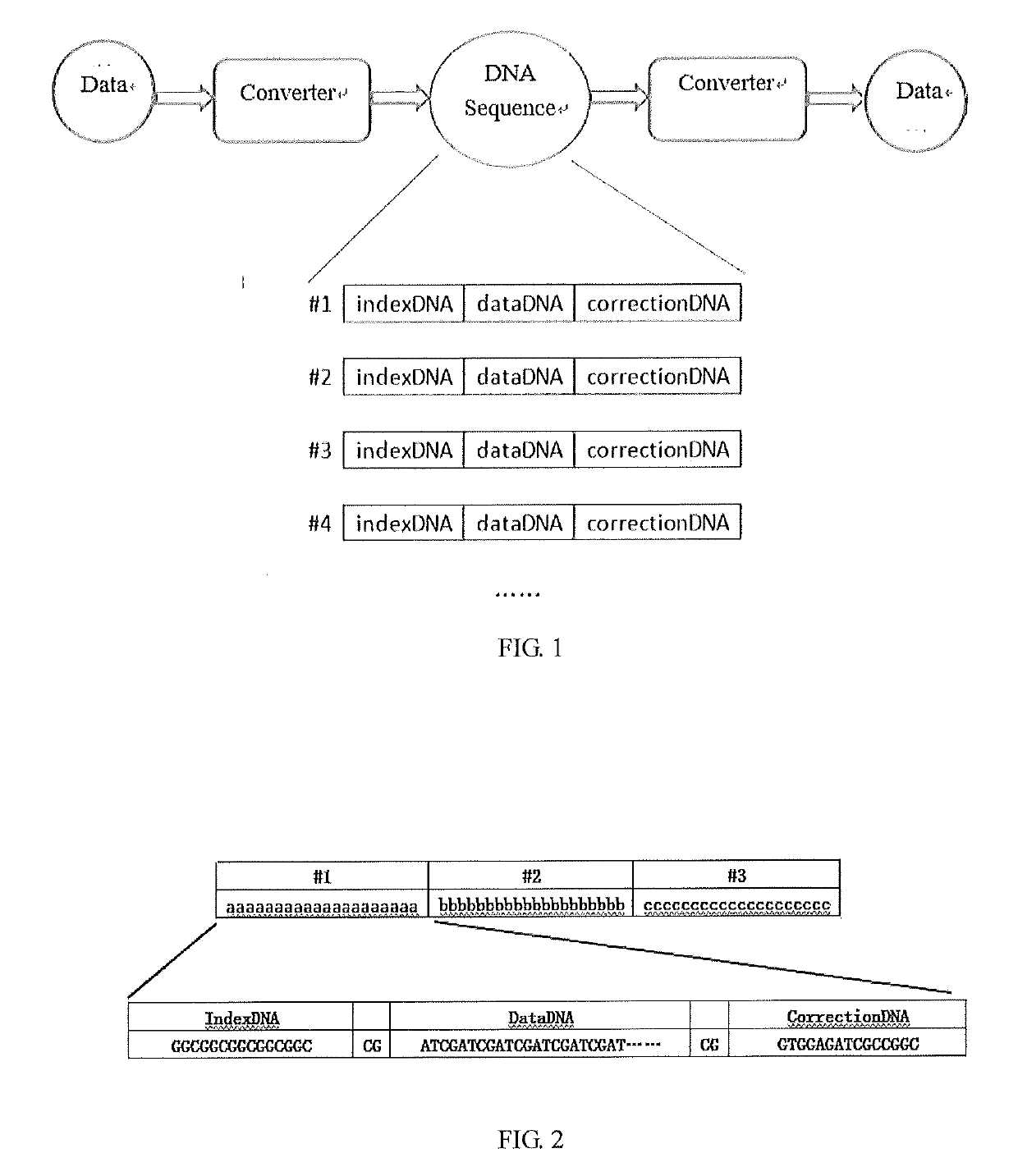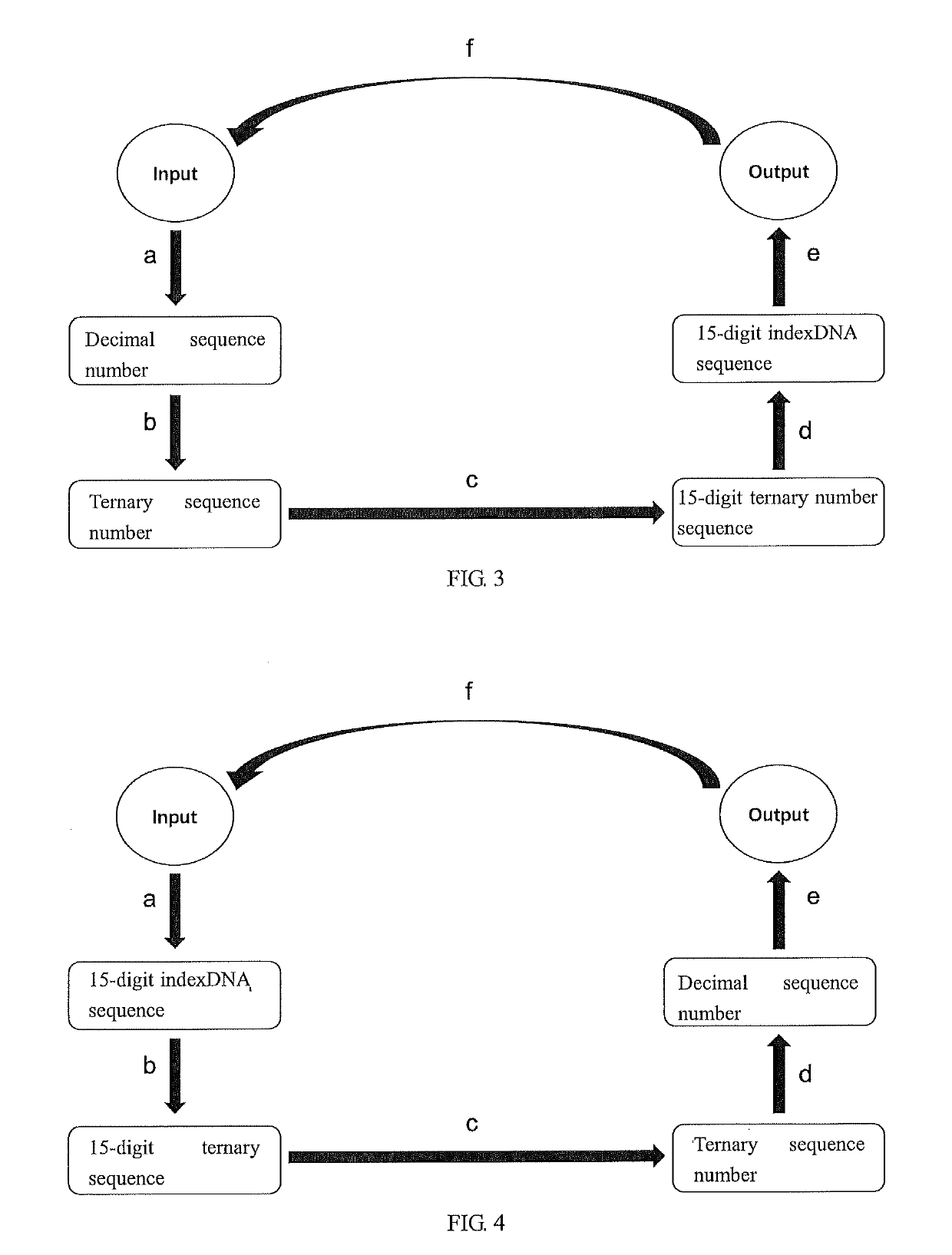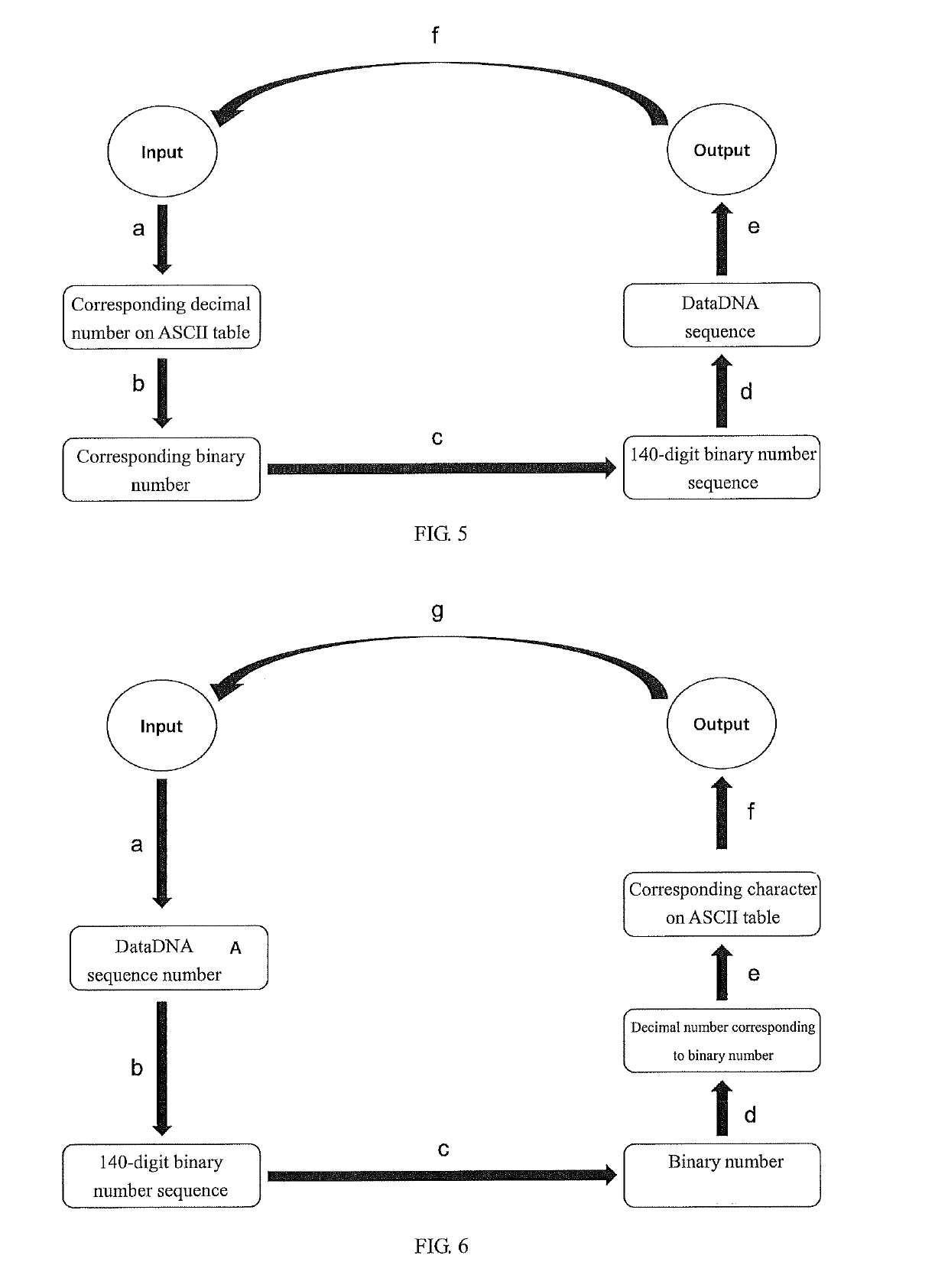Method for biologically storing and restoring data
a biological storage and data technology, applied in the field of biological storage and data restoration, can solve the problems of increasing the mutation rate of single base repetition, still many problems, and the boom of technology
- Summary
- Abstract
- Description
- Claims
- Application Information
AI Technical Summary
Benefits of technology
Problems solved by technology
Method used
Image
Examples
example 1
n and Restoration of Text Data
[0184]The data conversion process and restoration process of the present invention will be described below by taking the data of text type as an example.
[0185]Different types of data have been pre-processed, and the data format has been converted to a text file “written” by characters in the ASCII table. Therefore, the converter will face a string of text, which can also be interpreted as a long sequence of strings. The data text is to be converted to data DNA sequences based on character string units of the data text. As shown in FIG. 2, every 20 characters form a string, which is a conversion unit and is encoded into a single-stranded data DNA sequence. Starting from the first conversion unit (#1) of the data text, all conversion units (#2, #3, etc.) are sequentially encoded to generate a plurality of single-stranded data DNA sequences.
Generation and Restoration of indexDNA Sequence
(1) Generation Algorithm for indexDNA Sequence
[0186]The information st...
example 2
Test and Results
[0237]Based on the above algorithms and designs, a simple bio-converter was written, and the performance of this converter was tested.
(1) Storage of Small-Scale Text Data
[0238]The first-generation converter did not have index and correction modules, so only some very short texts can be converted. In the case of dealing with some short texts, since there are no indexDNA sequences and correctionDNA sequences, data DNA sequences are shortened, the efficiency is improved, and the cost is reduced at the application level. On the other hand, in the short term, the current situation of bio-storage of short texts is more common. Taking “Dai Lab, Tsinghua University, Synthetic Yeast, Synthetic Biology” as test texts, they are converted into dataDNA sequences as shown in Table 6:
TABLE 6Storage test results of small-scale text dataInformation ofdataDNAReductionText for TestingdataDNA SequenceSequenceof TextDai LabTATACACCACGAAGCCACCTAATTAGAGANumber of Bases: 43Dai LabAGCACCACCA...
PUM
 Login to View More
Login to View More Abstract
Description
Claims
Application Information
 Login to View More
Login to View More - R&D
- Intellectual Property
- Life Sciences
- Materials
- Tech Scout
- Unparalleled Data Quality
- Higher Quality Content
- 60% Fewer Hallucinations
Browse by: Latest US Patents, China's latest patents, Technical Efficacy Thesaurus, Application Domain, Technology Topic, Popular Technical Reports.
© 2025 PatSnap. All rights reserved.Legal|Privacy policy|Modern Slavery Act Transparency Statement|Sitemap|About US| Contact US: help@patsnap.com



